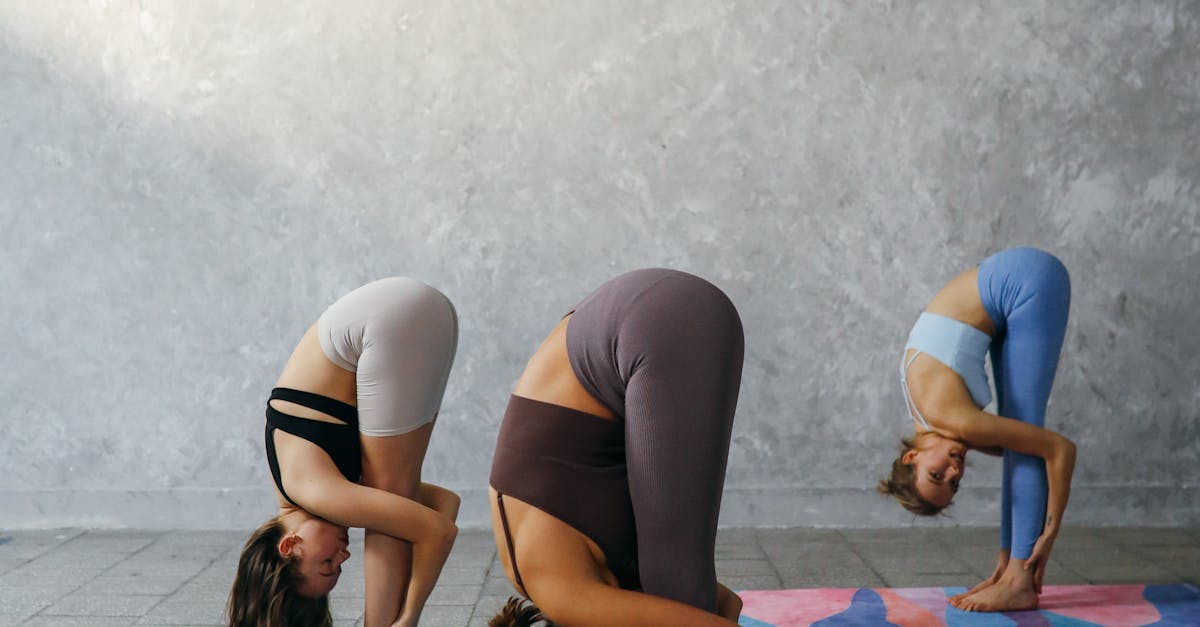Embracing Serenity: A Beginner’s Guide to Group Meditation

Embarking on a journey of meditation can be both exciting and daunting, especially for beginners. The thought of joining your first group session may seem intimidating, but with the right guidance and preparation, it can be a rewarding experience that sets the stage for a lifelong practice. In this comprehensive guide, we aim to help you seamlessly step into the world of group meditation, offering insights, tips, and a step-by-step approach to ensure that you not only feel ready but also eagerly anticipate the session ahead. Together, we will explore the fundamentals of meditation, prepare for your first group session, navigate the experience, and reflect on how to integrate meditation into your daily life, allowing you to harness its profound benefits with ease and confidence.
1. Understanding Meditation
Welcome to the empowering world of meditation! Whether you’re drawn to meditation for its calming effects, mental clarity, or simply to explore a new path toward well-being, it’s an incredible journey that begins with understanding its core principles. Meditation isn’t just about sitting still and being quiet; it’s a practice that can offer a deeper connection to oneself and the world around us. For beginners, it’s essential to grasp the basics. This includes uncovering the meaning, purpose, and benefits of meditation. Through meditation, individuals can cultivate a sense of inner peace, reduce stress, enhance self-awareness, and even improve their focus and attention in daily life. Understanding the role of meditation in promoting overall well-being gives beginners a clear foundation to start their journey.
Exploring the Basics of Meditation
Embarking on a journey of meditation involves delving into a world of profound meaning and boundless benefits. At its core, meditation is a practice that fosters a deep sense of inner connection, peace, and serenity. For beginners, understanding the basics of meditation unveils a transformative path for mental and emotional well-being. The purpose of meditation extends beyond just relaxation; it allows individuals to tap into their inner resilience, embracing a sense of calm amidst life’s daily challenges. By exploring the meaning and purpose of meditation, beginners can recognize its potential to enhance their overall quality of life, providing a sanctuary for self-discovery and growth.
Types of Meditation Practices
As you embark on your meditation journey, discovering the various meditation techniques available can open doors to a world of tranquility and self-discovery. Mindfulness meditation, one of the most popular practices, focuses on being present in the moment, heightening awareness, and embracing a non-judgmental approach to thoughts and feelings. This technique often involves anchoring attention to the breath, allowing beginners to foster a deep sense of calm and inner peace. Another technique, loving-kindness meditation, centers around compassion and positivity. By cultivating feelings of love and goodwill towards oneself and others, beginners can experience a profound sense of emotional wellness and interconnectedness with the world around them. Guided visualization, on the other hand, invites beginners to embark on a mental journey, often guided by a practitioner’s soothing voice and descriptive imagery, promoting relaxation, stress reduction, and creative thinking.
2. Preparing for Your First Group Session

Embarking on your first group meditation session is an exciting step toward personal growth and well-being. As you prepare for this experience, it’s essential to approach it with an open and curious mindset. One of the key tips for beginners is to prepare mentally by setting aside any expectations, allowing yourself to be fully present and receptive to the practice regardless of prior experiences. Embracing the experience also means setting the right physical environment. Ensure you’re dressed comfortably and consider bringing items such as a cushion, blanket, or anything that helps you feel at ease. By taking these small steps, you create a welcoming space for yourself, setting the stage for a fulfilling group meditation experience.
Setting the Right Mindset
Preparing for a group meditation session involves setting the right mindset, creating a mental space conducive to mindfulness and inner exploration. It’s natural to feel some pre-session nerves, especially if you’re new to the practice. One approach to calming these nerves is to remind yourself that everyone begins somewhere, and this journey is about personal growth and self-discovery. Embracing a positive mindset means letting go of any self-judgment and allowing yourself to be fully present in the moment. Mindfulness, the practice of being aware of the present moment, can be beneficial in preparing your mindset. You can engage in simple breathing exercises or short moments of quiet reflection to gently ease into the mental space needed for group meditation. By embracing these tips, you can set the stage for a fulfilling and enriching group meditation experience while fostering a sense of mental preparedness and tranquility.
Joining a Meditation Group
Choosing the right meditation group can greatly enhance your initial meditation experience, providing a supportive environment that aligns with your goals and values. When finding a group, consider the atmosphere you thrive in. Some groups may focus on spiritual aspects, while others emphasize the practical application of meditation in daily life. Engaging in community resources and support networks can also be invaluable for beginners. Online platforms, local community centers, and social media groups are excellent places to connect with like-minded individuals and explore different group options. Look for groups that offer introductory sessions or beginner-friendly environments, where you can comfortably ease into the practice while receiving guidance and support from experienced practitioners and fellow beginners.
3. Navigating Your First Group Session
As you approach your first group meditation session, it’s natural to feel a mix of anticipation and curiosity. Being in a group setting offers a unique opportunity to tap into collective energy while focusing on personal progress. The environment is typically welcoming and inclusive, allowing you to feel at ease as you explore this new experience. It’s important to keep an open mind and be receptive to the guidance and instructions provided. While navigating your first group session, remember that each person’s meditation journey is unique, and there’s no one-size-fits-all approach. Use this time to become familiar with the group dynamics and embrace the sense of community, as it can contribute significantly to the peaceful ambiance.
Welcoming Environment
A welcoming environment is essential for beginners entwining with group meditation. These enclaves are designed to provide a comforting and inclusive space for individuals of all backgrounds. When entering a group session, understand that it’s normal to experience initial hesitations, especially if this is your first time. Remember that everyone there has embarked on their meditation journey with a similar sense of curiosity and openness. Engage with your surroundings, acquaint yourself with the space, and take comfort in the fact that you’re part of a supportive community. Overcoming initial hesitations is about embracing the shared energy and collective experience, recognizing that each person’s journey is respected and valued.
Guidance and Instruction
Guidance and instruction play a vital role in group meditation, offering beginners the opportunity to learn from seasoned practitioners and meditation leaders. In these sessions, you can embrace the collective energy while staying focused on your personal progress. Seasoned practitioners often provide invaluable insights, sharing techniques and wisdom gained from their own meditation journeys. As a beginner, it’s essential to be open to learning and to absorb the guidance offered, recognizing that each person’s meditation experience is unique. Embracing the collective energy of the group enhances the ambiance, fostering a sense of tranquility and support, which can deeply enrich your personal meditation practice. At the same time, staying focused on personal progress means appreciating the guidance provided while nurturing your individual exploration of mindfulness and self-awareness, allowing you to make the most of the collective experience while honoring your unique path.
4. Post-Session Reflection and Integration
After completing a group meditation session, it’s incredibly beneficial to take a moment for post-session reflection. Reflecting allows you to process the experience and gain insights into your personal growth. Consider jotting down any thoughts or emotions that arose during the session, acknowledging the impact of the practice on your mental and emotional well-being. This post-session reflection contributes to a deeper integration of meditation into your everyday life. It’s about recognizing the positive effects and lessons learned during the session, carrying the peace and clarity gained into your daily routine. Additionally, transitioning from group meditation to personal practice is a natural part of the journey. Integrating meditation into your daily life involves cultivating a consistent routine. Begin by setting aside dedicated time for personal meditation, whether it’s in the morning to start your day with mindfulness or in the evening to unwind and foster inner stillness. Embracing this integration enables you to harness the long-term benefits of meditation and empowers you to navigate life with greater ease and mindfulness.
Reflecting on the Experience
Reflecting on a group meditation session holds immense value, allowing individuals to process the experience and uncover personal insights. Each person’s takeaway from the session can be unique, offering profound lessons and opportunities for growth. Consider the emotions, thoughts, and sensations that surfaced during the practice, recognizing the impact on your mental and emotional well-being. Reflecting allows you to harness the benefits gained during the session, from a sense of inner calm to heightened self-awareness. Identifying your individual takeaways contributes to a deeper integration of meditation into your daily life, fostering a greater sense of mindfulness and clarity.
Continuing Your Meditation Journey
Creating a consistent personal meditation practice allows you to continue the positive momentum gained from group sessions into your everyday life. Transitioning from group meditation to personal practice involves establishing a routine that suits your lifestyle, aiming for regularity while being flexible to accommodate life’s demands. While personal meditation is often introspective, it’s beneficial to maintain connections with the group, whether through periodic group sessions or by staying in touch with fellow practitioners, fostering a sense of community and shared growth. By integrating meditation into your daily life, you enable its long-term benefits to unfold dynamically, contributing to your overall well-being and mental clarity. Maintaining a consistent personal meditation routine doesn’t always require long periods of time. Even short, mindful moments throughout the day can make a meaningful impact. Whether it’s a brief session in the morning to set a positive tone for the day, or a calming practice before bed to unwind, the consistency of integrating meditation into your daily life can significantly enhance your emotional resilience and overall mindfulness. As you embrace this journey, consider journaling your experiences, noting the shifts in your mental and emotional state, and celebrating the small victories. This self-awareness and documentation can serve as a source of encouragement and a measure of personal growth along your meditation pathway. Incorporating meditation into your daily life can take various forms, such as mindful breathing exercises, guided meditation apps, or silent reflection periods. It’s about finding what resonates with you and tailoring the practice to suit your individual needs and preferences. Embracing your meditation journey involves being gentle with yourself and recognizing that it’s okay to adjust your practice as you grow and evolve. By doing so, you create a sustainable and fulfilling approach to meditation, fostering lifelong well-being and inner harmony.
How can I find a meditation group that suits my needs?
Finding a meditation group that aligns with your preferences involves considering the atmosphere, focus, and accessibility. You can explore local community centers, online platforms, or social media groups. Look for introductory sessions or beginner-friendly groups that resonate with your meditation goals, allowing you to comfortably engage and grow within the community.
What should I do if I find it challenging to maintain a consistent meditation routine?
Maintaining a regular meditation routine can be challenging. Start by setting realistic expectations, aiming for small, achievable goals. Experiment with different times of the day and meditation styles to find what suits you best. Additionally, consider gentle reminders, integrating meditation with existing habits, or practicing mindfulness during daily activities to foster consistency.
Is it normal to experience distractions or restlessness during meditation?
Distractions and restlessness are common during meditation. It’s natural for thoughts and external sensations to arise. Acknowledge these experiences without judgment and gently redirect your focus to your breathing or chosen focal point. Over time, with practice, your ability to remain centered will strengthen.




